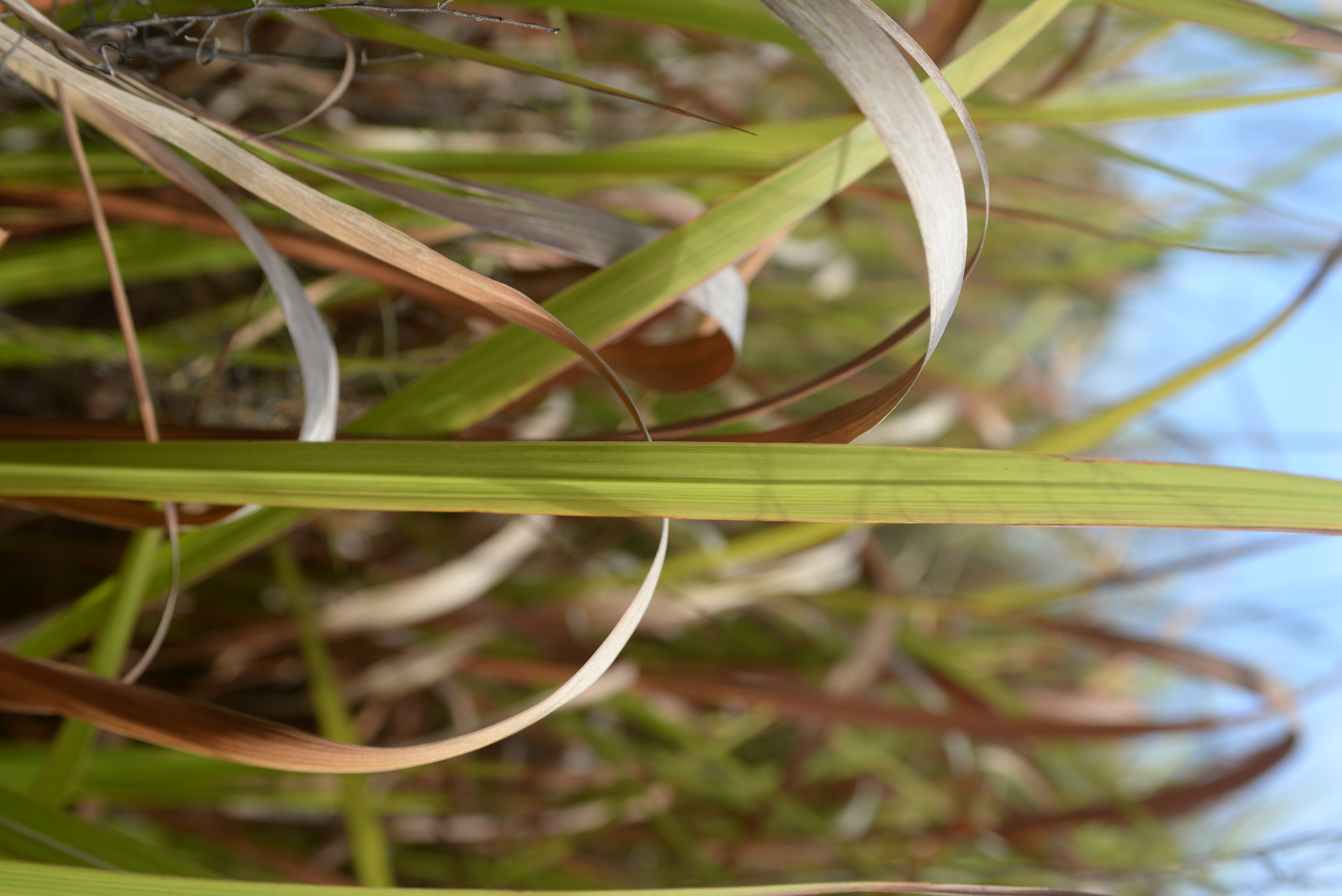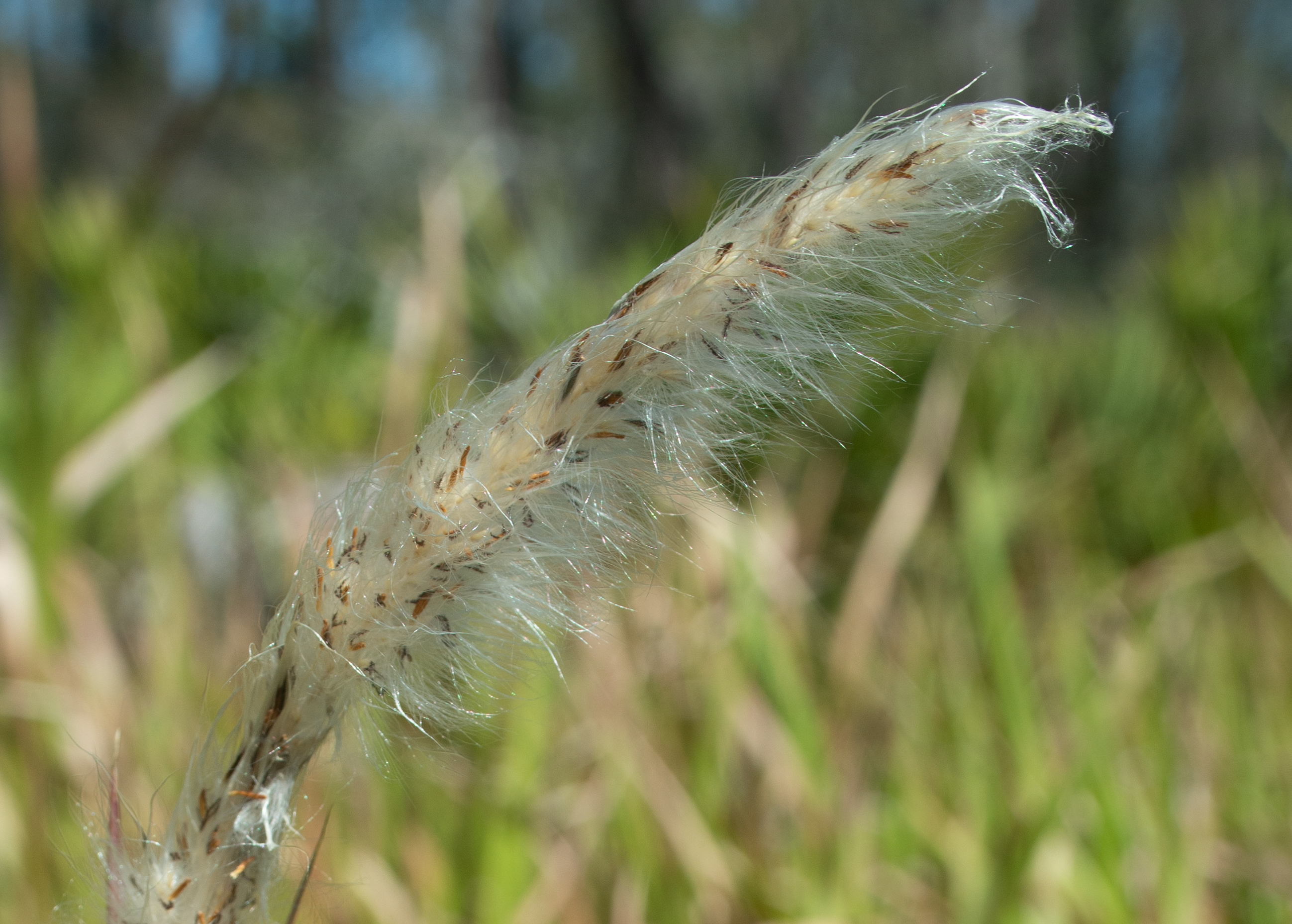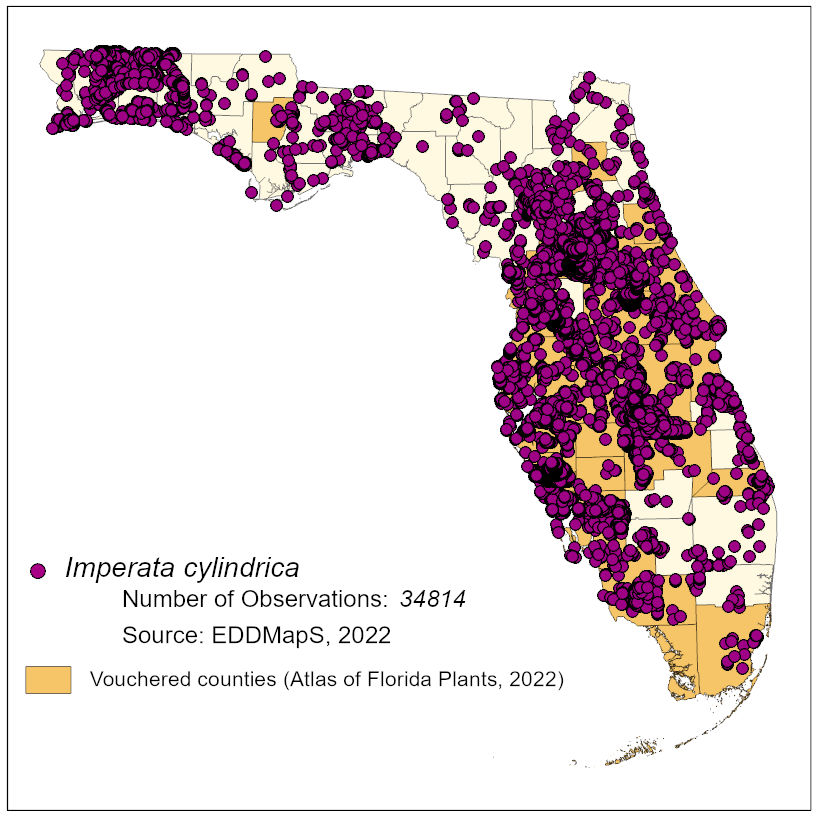Common Name: cogon grass
Family: Poaceae
Common Synonyms: Lagurus cylindricus
USDA Hardiness Zone: 6a-9b
Growth Habit: Graminoid
Origin: East Africa
FISC Category: 1
FDACS Listed Noxious Weed: Yes
Introduction Date: 1930s
IFAS Assessment:


Perennial grass, growing in loose or compact tufts, from stout, creeping rhizomes with sharp-pointed tips. Leaf sheaths relatively short, glabrous or pubescent, membranous ligule 0.5-1 mm long. Leaf blades erect, flat, narrow and pubescent at base, to 1.2 m tall and to 2 cm wide, with noticeably off-center whitish midvein. Inflorescence a dense terminal panicle, white silky and plume-like, to 21 cm long and 3.5 cm wide. Spikelets paired on unequal stalks, each spikelet surrounded by long white hairs.
Disturbed areas
Forms extensive monoculture patches over time. Alters ecosystem function, increases fire severity and intensity, increases fire return interval. Requires regular, repeated treatments to control.

Fluazifop is a selective grass herbicide that provides more flexibility when desirable broadleaf species are present for revegetation. If not controlled, cogongrass will spread along roadways and into pastures, mining areas, forest land, parks, and other recreation areas. Extensive rhizomes must be eliminated for long-term control.
IFAS, Center for Aquatic and Invasive Plants. 2013. https://plants.ifas.ufl.edu/plant-directory/imperata-cylindrica/. Accessed June 13, 2017.
NISIC-USDA. 2017. Species Profile: Imperata cylindrica. https://www.invasivespeciesinfo.gov/plants/cogongrass.shtml. Accessed June 13, 2017.
IFAS, Center for Aquatic and Invasive Plants. 2013. Cogongrass, Imperata cylindrica. https://plants.ifas.ufl.edu/plant-directory/imperata-cylindrica/. Accessed June 13, 2017.
Dave's Garden. PlantFiles: Cogongrass, Imperata cylindrica. http://davesgarden.com/guides/pf/go/776/#b. Accessed June 13, 2017.